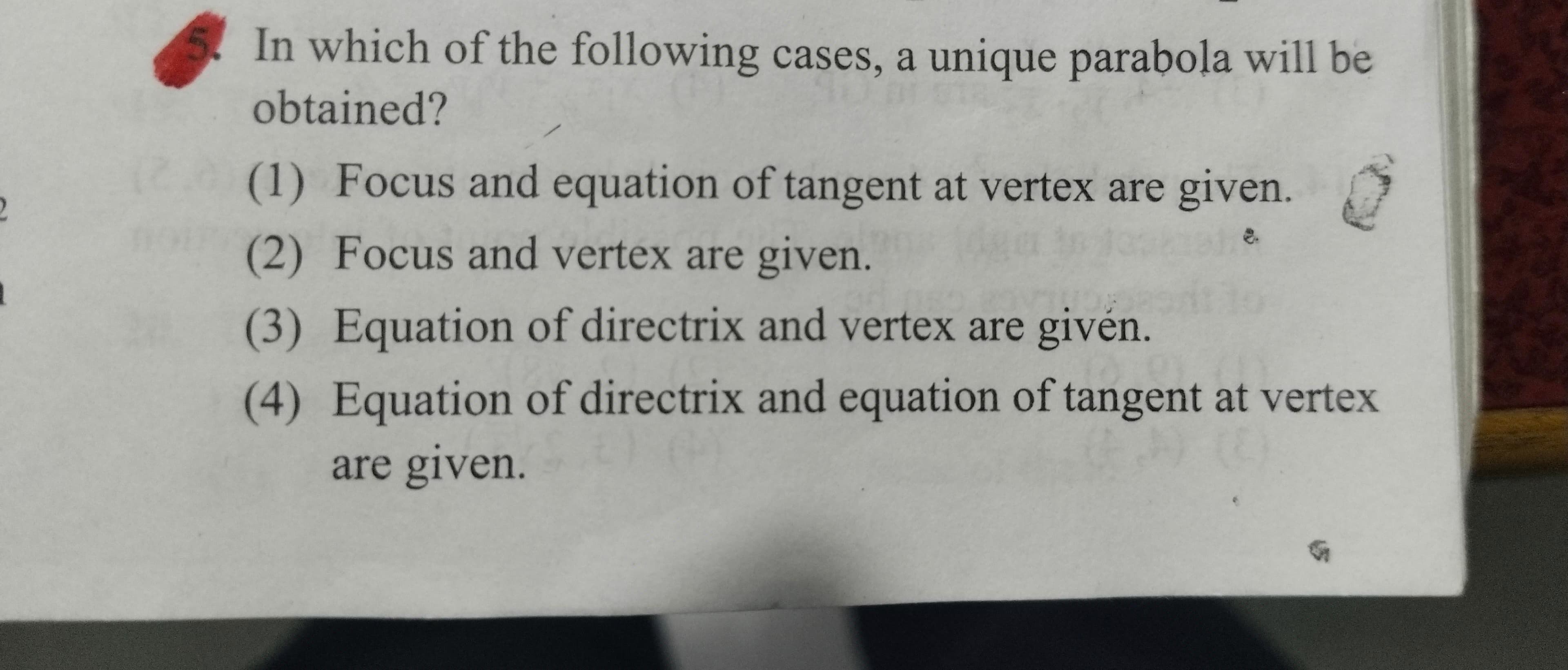Question
Question: In which of the following cases, a unique parabola will be obtained?...
In which of the following cases, a unique parabola will be obtained?

Focus and equation of tangent at vertex are given.
Equation of directrix and vertex are given.
Focus and vertex are given.
Equation of directrix and equation of tangent at vertex are given.
(1), (2), (3), (4)
Solution
A parabola is uniquely defined by its focus and directrix. We analyze each case:
Case (1): Focus and equation of tangent at vertex are given. If the focus F and the tangent at vertex TV are given, the axis of symmetry is the line through F perpendicular to TV. The vertex V is the intersection of the axis and TV. The distance VF is the focal length p. The directrix is then determined as the line perpendicular to the axis, at a distance p from V on the opposite side of F. Thus, the focus and directrix are uniquely determined, resulting in a unique parabola.
Case (2): Focus and vertex are given. If the focus F and vertex V are given, the axis of symmetry is the line passing through F and V. The distance VF is the focal length p. The directrix is uniquely determined as the line perpendicular to the axis of symmetry, passing through a point D′ such that V is the midpoint of the segment FD′. Thus, the focus and directrix are uniquely determined, resulting in a unique parabola.
Case (3): Equation of directrix and vertex are given. If the directrix D and vertex V are given, the axis of symmetry is the line through V perpendicular to D. The distance from V to D is the focal length p. The focus F is uniquely determined as the point on the axis of symmetry, at a distance p from V, on the side opposite to the directrix D. Thus, the focus and directrix are uniquely determined, resulting in a unique parabola.
Case (4): Equation of directrix and equation of tangent at vertex are given. If the directrix D and the tangent at vertex TV are given, for a parabola to exist, D and TV must be parallel. Assuming they are parallel, the axis of symmetry is the line perpendicular to both D and TV. The vertex V is the intersection of the axis and TV. The distance from V to D is the focal length p. The focus F is uniquely determined as the point on the axis of symmetry, at a distance p from V, on the side opposite to the directrix D. Thus, the focus and directrix are uniquely determined, resulting in a unique parabola.
In all four cases, the focus and directrix of the parabola can be uniquely determined, which means a unique parabola is obtained.
